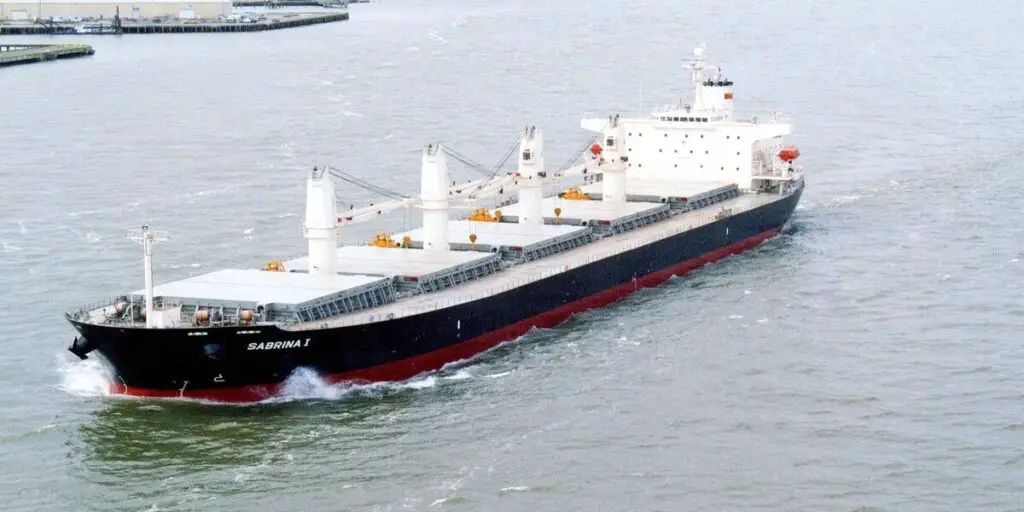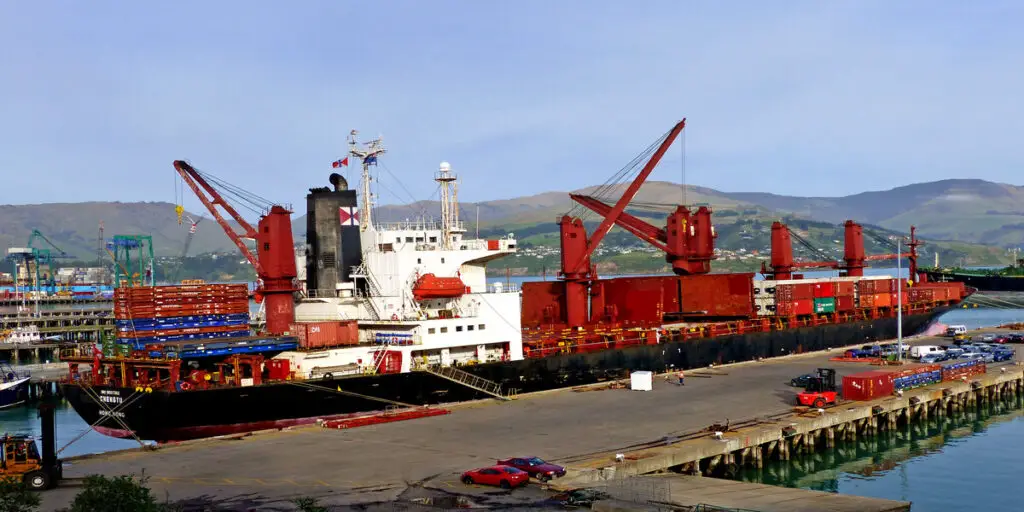How Many Cargo Ships Are There In The World?
It is estimated that there are 99,800 merchant ships across the globe. This number, from the United Nations Conference on Trade and Development (UNCTAD), does not include warships, fishing vessels or private pleasure craft – so the actual number of vessels around the globe is much higher.
| Ship type | % of worldwide fleet by DWT | Number of ships* |
|---|---|---|
| Bulk carriers | 43 | 42,914 |
| Oil tankers | 29 | 28,942 |
| Container ships | 13 | 12,974 |
| General cargo ships | 4 | 3,992 |
| Other (ferries, passenger ships, gas carriers etc.) | 11 | 10,978 |
Deadweight tonnage (DWT) is the measure of how much weight a ship can carry, including cargo, fuel, water, ballast, provisions, passengers, and crew.
The different types of cargo ship and their cargoes
Different types of ship specialise in the transport of certain cargoes, so while some ships might be common than others, global trade relies on all types of ship to prosper.
Different cargoes require specialist knowledge and care, and so ensuring that they are transported on the correct type of ship is essential.
Tankers are designed to carry only oil, gas, or chemical products. These cargoes are very valuable and are in constant demand.
These products tend to be dangerous and must be handled with great care. Additional specialist training courses must be completed by anyone who wants to work on tankers.
Bulk carriers transport large quantities of materials such as coal, iron ore, grains, cement, and sand. They are not typically used or designed to transport packaged goods.

General cargo ships offer the greatest flexibility for the transport of different types of cargo. A single general cargo ship can carry a variety of cargoes ranging from food, clothing and footwear, chemicals, machinery, cars, motorbikes, and even yachts.
Although they do offer great flexibility, general cargo ships require much more forward planning to ensure that different cargoes are loaded in the right place on the ship so that they can be easily accessed when it is time to offload the cargo.
The introduction of shipping containers in the 1950s led to a sharp decline in general cargo ship numbers.
Before shipping containers, general cargo ships could take up to three weeks to load, and there would inevitably be wasted space on the ship.

Container ships carry a variety of cargo in standardised shipping containers. The fact that these containers are built to the same standards and dimensions everywhere in the world means that container ships are extremely efficient to load and unload.
The shipping containers themselves offer protection from the elements for their contents, and are easily stackable in ways that non-container cargo is not.
Cargo values by ship type
Although figures show that bulk carriers are the largest shipping sector in terms of the ships themselves, statistics provided by the World Shipping Council showing the value of cargo transported around the world paint a different picture:
| Ship type | % of worldwide seaborne trade value |
|---|---|
| Container | 52 |
| Tanker | 22 |
| General cargo | 20 |
| Dry bulk | 6 |
Bulk carriers are the most common type of ship in terms of deadweight tonnage, and the cargo they transport is extremely important. Grains, ore, wood, cement and other raw materials are all transported by bulk carriers and are essential to keep millions of people around the world fed, warm, and housed.
However, their cargo is not nearly as financially valuable as the cargo transported by container ships, tankers, or general cargo ships.
As you can imagine, 100,000 tonnes of crude oil sells for much more than 100,000 tonnes of maize.
Container ships and general cargo ships are also able to carry a wide variety of cargo which may be extremely valuable.
A single shipping container could easily hold $500,000 worth of consumer electronics.
Containers are much quicker to load and unload between ship and shore than bulk cargo, and are not disrupted by weather in the way bulk cargo such as cement may be.

What does the future look like for cargo ship numbers?
Year on year, the global number of cargo ships increases.
Shipping is intrinsically linked to economic growth. The Baltic and International Maritime Council (BIMCO) estimates that the global fleet will increase by 6.4% over the next 5 years.
This is a slower rate of growth than the industry has experienced in the past 5 years, but nonetheless, the industry is still growing.
Data from UNCTAD shows that around two-thirds of planned ships currently on order to be built are dry bulk carriers and tankers.
Fewer ships, but more cargo capacity
In March 2021, Ever Given made global headlines when it blocked the Suez Canal by running aground. Since then, the discussion around whether ships are getting too big has restarted.
Data from UNCTAD shows that ten years ago, ‘megavessel’ container ships – those which can carry more than 10,000 containers – made up only 6% of the world’s container ship capacity.
Now, only ten years on, that number is almost at 40%.
It is clear to see that these huge container ships are becoming increasingly popular, with shipping companies opting to build fewer but much larger ships in order to meet their customers’ needs while reducing their crewing, maintenance, and fuel costs.
This has raised some concerns because these larger ships can be more difficult to manoeuvre and slow down, put additional pressure on ports’ infrastructure, and can be harder to recover in case of an accident like the Ever Given.
However, it is safe to say that while container ships might not get too much bigger in the future, the trend of shipping companies ordering bigger ships is here to stay.
